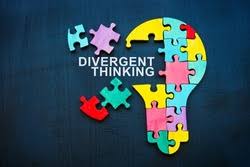Inferior Education Plan for Black Boys with Learning Disabilities in Special Education: A Civil Rights Issue.
In 1913, Lichtenberger published “Negro Illiteracy in the United States” which highlighted the illiteracy rates of people of color (i.e., Black) throughout the United States that far exceeded the rates of Whites. More than 100 hundred years later, the words of this publication sound similar to the National Assessment of Educational Progress reading data. The academic system has a long history of segregation between the rich and poor, and students of different ethnicities. Historically, it was a criminal offense to teach any Black student to read or write, as education was mainly accessible to White students who came from parents that had the capital to receive private schooling or tutoring. Students from lower socioeconomic status were also deprived of a fair and equal education by not receiving rigorous curriculum focused on reading, writing, and math. The failure to improve the quality of human life was manifested by failing to teach students, resulting in their education depending on acts of mercy from the State. Does this sound familiar to what is happening in the dyslexia community today with all the testimonies to State Legislatures?
Historically, teaching Blacks to read has not been a high priority, and those in power believed teaching them to read was a threat to the establishment of slavery, as self-knowledge could lead to the pursuit of one’s liberation and personal freedom. The early periods in education in the United States set the stage for our current situation in 2020, which could now be called the Inferior Education Plan for Black boys in Special Education. Illiteracy has continued to be a major hurdle, and the lack of access to high-quality instruction and assessments have resulted in alarming educational disparities/inequities every year. Low literacy rates intensify the difficulties Black students face from the misguided practices involving their learning, which are exacerbated by inaccurate and inappropriate placement into classes for emotional or behavioral disorders (EBD) (see, Banks, 2017). Labeling students’ needs as behavioral rather than academic does little to address the root problem (i.e., dyslexia), and, in fact, creates unnecessary damaging consequences over time (see, Wolf, 2019). Time is their enemy!
The federally mandated Individual Education Plan (IEP), despite our best intentions, has become another form of oppression and a Civil Rights issue because it traps Black boys in a Special Education system which too often prevents them from receiving academic equality. On the IEP document, they are consistently “categorized” as EBD and tracked/placed into behavior intervention plans, which limits them from participating in reading interventions (see, Lindo, 2006). Unfortunately, having the EBD identification typically presents Black boys’ learning as inferior. Teachers normally make the initial Special Education referrals, which are often subjective and based on their own biases (deficit thinking) towards Black students’ ability (see, Robinson 2017). In essence, their lack of cultural sensitivity becomes problematic, leading to the opposite of students receiving a free and appropriate education.
The urgency to tackle this issue does not call for more “statements” from School Districts, but rather urgent “Action Plans” addressing adequate training in racial literacy, the Science of Reading, and the procedures prevalent in the referral process, which includes using both formal and informal assessments. We also need to examine the disproportionate number of students with a Functional Behavior Assessment. Arguably, the Inferior Education Plan for Black boys with learning disabilities in Special Education represents one of the most pressing Civil Rights issues in America’s educational institutions today. The time is now to break the chain of illiteracy!
 |
| Copyright @cs.spectrum |
Shawn Anthony Robinson PhD



“... but rather urgent “Action Plans” addressing adequate training in racial literacy, the Science of Reading, and the procedures prevalent in the referral process, which includes using both formal and informal assessments.”
ReplyDeleteEnough said!